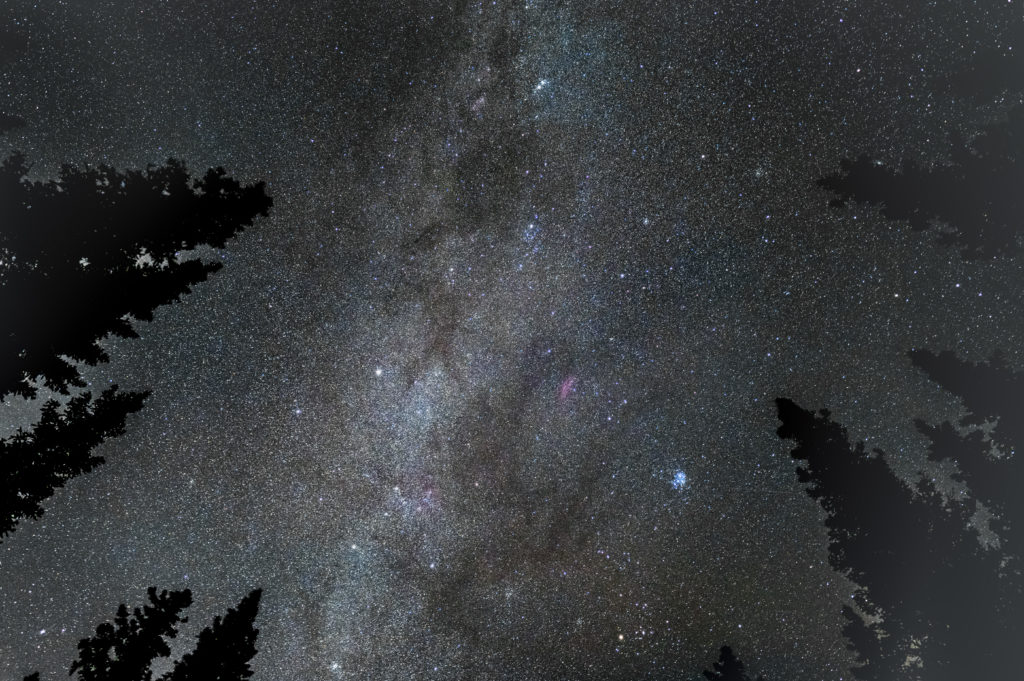
The constellations Orion, Canis Major, Taurus, Perseus, and Auriga dominate the northern sky this month, while southern observers see these same groups along with Puppis, Carina, and Vela, constellations which harbor some of the best sights the night sky has to offer. There are plenty of planets to see this February, mostly in the eastern sky before sunrise. And you get a chance to glimpse the glow of the zodiacal light, the Sun’s light reflected off tiny grains of dust left over from the formation of the solar system. Here’s what to see in the night sky this month…
1 February 2022. New Moon, 05:46 UT
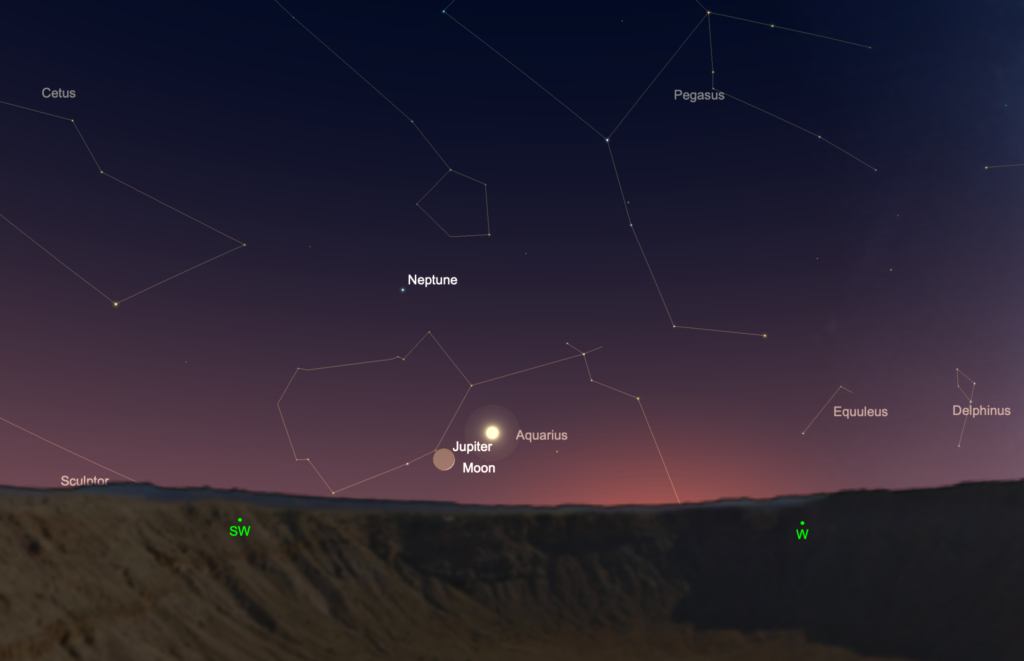
2 Feb. Look low in the southwestern sky for a thin sliver of moon just south and west of the planet Jupiter. The planet will slowly disappear into the evening twilight during February on its way to conjunction early in March. After that, the evening sky will be devoid of bright planets until Mercury reappears in April.
4 Feb. After putting on a good show of it in the evening sky these past six months, Saturn reaches conjunction with the Sun. It will slowly reappear in the constellation Capricornus in the morning sky as February and March wear on.
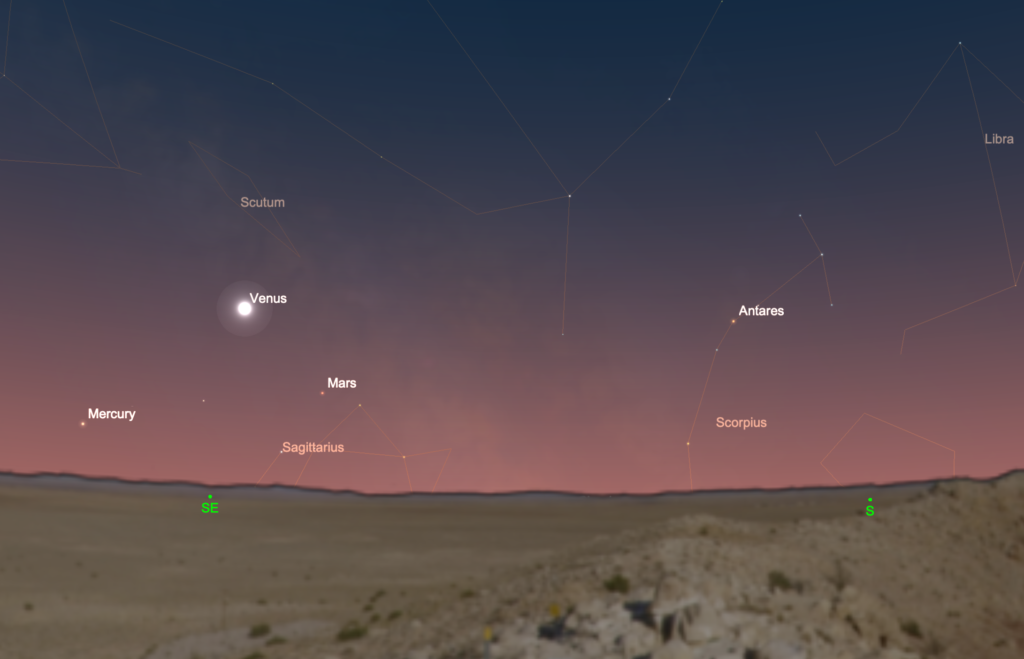
5 Feb. The action for planets turns to the morning sky from now through June. This morning, look for Venus and Mercury about 13 degrees apart low in the southeast before sunrise. Mars also joins the show. All three planets lie just east of the ‘Teapot’ of Sagittarius. The planets are better positioned now for southern-hemisphere observers as they lie along the ecliptic at a shallow angle to the horizon.
8 Feb. First Quarter Moon, 13:50 UT
8-9 Feb. On the 8th, look for the first-quarter Moon about 6 degrees from the Pleiades star cluster. The Moon lies between the Pleiades and Hyades on the 9th.
12 Feb. Venus reaches it maximum illuminated extent today only five weeks past inferior conjunction. This means the brilliant sunlit part of Venus presents its maximum angular area on the sky and reaches near peak brightness. This week the planet shines at an impressive magnitude -4.6 and dominates the sky low over the southeastern sky before sunrise. With a clear view of the southwestern horizon, you can glimpse Mars about seven degrees below and to the right of Venus.
12-13 Feb. The thickening Moon passes through Gemini and the bright stars Castor and Pollux.
16 Feb. Full Moon, 16:56 UT
16 Feb. Mercury reaches its greatest western elongation about 26 degrees from the Sun. It remains well positioned over the next several days for southern-hemisphere observers as it shines near magnitude 0.0 before it moves back towards the Sun later in the month.
16 Feb. The full Moon rises at the same time as the 1st-magnitude star Regulus in the eastern sky. The pair are spaced by about 5 degrees.
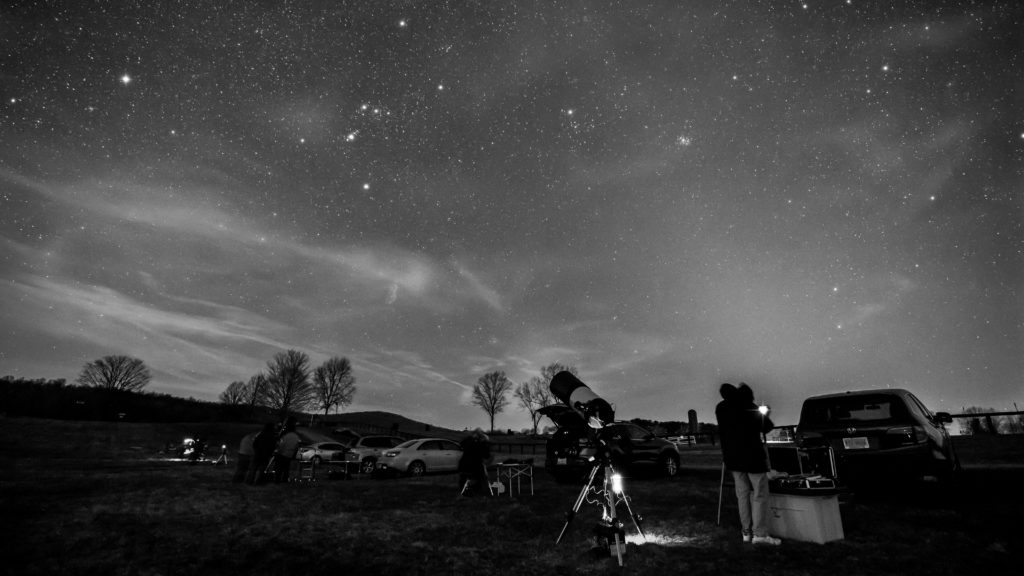
18-28 Feb. As the Moon gets out of the way, northern observers with very dark sky can spot the zodiacal light in the western sky after sunset. This whitish wedge-shaped glow emerges at a steep angle to the western horizon this time of year. It’s caused by sunlight reflected by fine dust grains along the plane of the solar system. The zodiacal light is brightest closer to the Sun, so look for the zodiacal light about half hour after the end of evening twilight.
20 Feb. Once again, the Moon rises with another bright star along the zodiac. Tonight, it trails Spica in the constellation Virgo by about 5 degrees in the southeastern sky.
23 Feb. Last Quarter Moon, 22:32 UT
24 Feb. A thick waning crescent Moon lies just 3 degrees from the bright red-orange star Antares in Scorpius as they rise in the southeast in the early-morning hours.
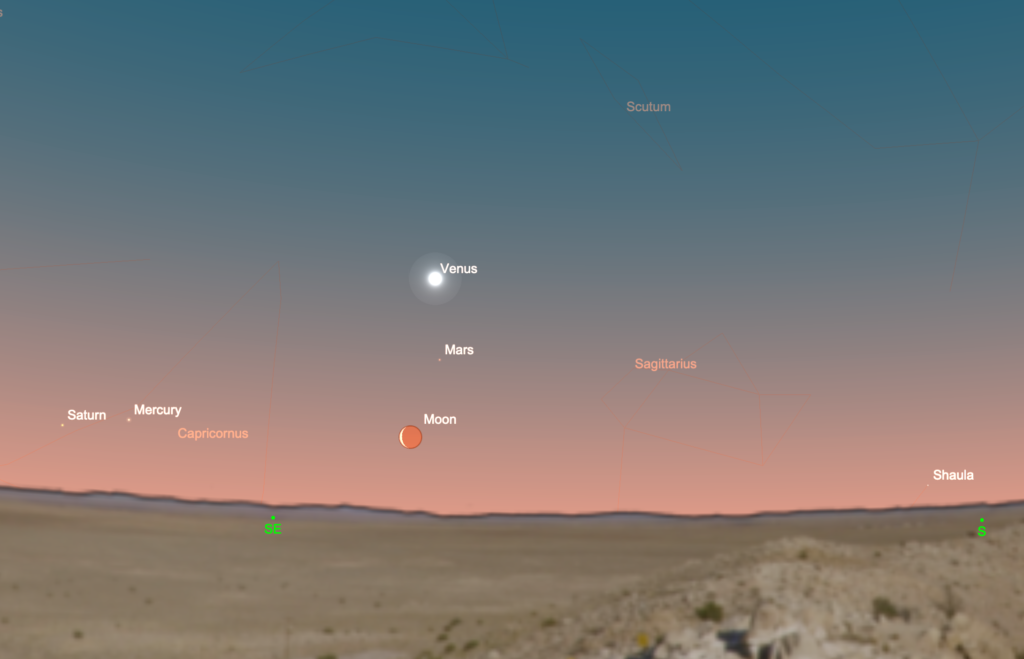
27 Feb. The waning crescent Moon joins ochre Mars and brilliant white Venus in the southeastern sky before sunrise. At magnitude +1.3, Mars isn’t terribly bright. But Venus shines at a stunning magnitude -4.8, a blazing presence in the early-morning sky! Mercury and Saturn lie about 15 degrees to the east of the Moon this morning, but you may need a pair of binoculars to extract them from the twilight glow.